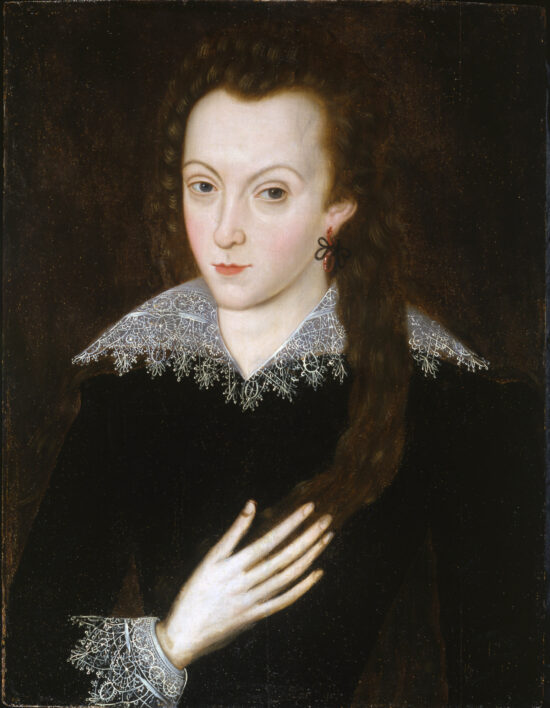Click/Tap the image to see the enlargement
Description
This picture was identified in 2002 as a portrait of Henry Wriothesley, 3rd Earl of Southampton. As well as a general resemblance to the earlier of the extant portraits of Southampton, several specific characteristics of the features are exact matches with those: the high forehead, the colour of the eyes, the nose with a bulb at the end, the narrow upper lip as compared to the lower, the slender fingers, and excessive length of hair. The present picture would appear to be the earliest extant oil portrait of Southampton showing the sitter at around seventeen to twenty years of age (1590-3). The lace of the collar was identified by the late Barbara Scott as an expensive Italian reticello lace of a type illustrated in Cesare Vecellio’s pattern book (first published in Venice in 1591). Archbishop Cobbe’s mistaken identification of the picture as ‘Lady Norton’ strongly suggests that the picture originated with the Earl of Southampton’s great granddaughter, Lady Elizabeth Norton (d. 1715) who in 1702 married Cobbe’s cousin Richard Norton of Southwick; the marriage was childless and on Richard’s death the Nortons died out. Lady Elizabeth bequeathed various Wriothesley heirlooms to her husband Richard Norton. Cobbe, whose father and uncle had been co-heirs of the Nortons, received a number of Norton pictures including a portrait of Richard Norton’s great-grandmother, Honor Norton of Southwick and the present picture.
The sitter is depicted at an age when Shakespeare met him and dedicated to him the major poems of Venus and Adonis and The Rape of Lucrece. Some scholars believe that the ‘fair youth’of many of the earlier Sonnets of Shakespeare refer to Southampton. Shakespeare’s description in Sonnet 20, in particular, seems to fit this portrait. (the name is thought to have been pronounced Wrisley, as it is spelt thus in a number of contemporary documents), the only literary patron ever acknowledged by William Shakespeare.
